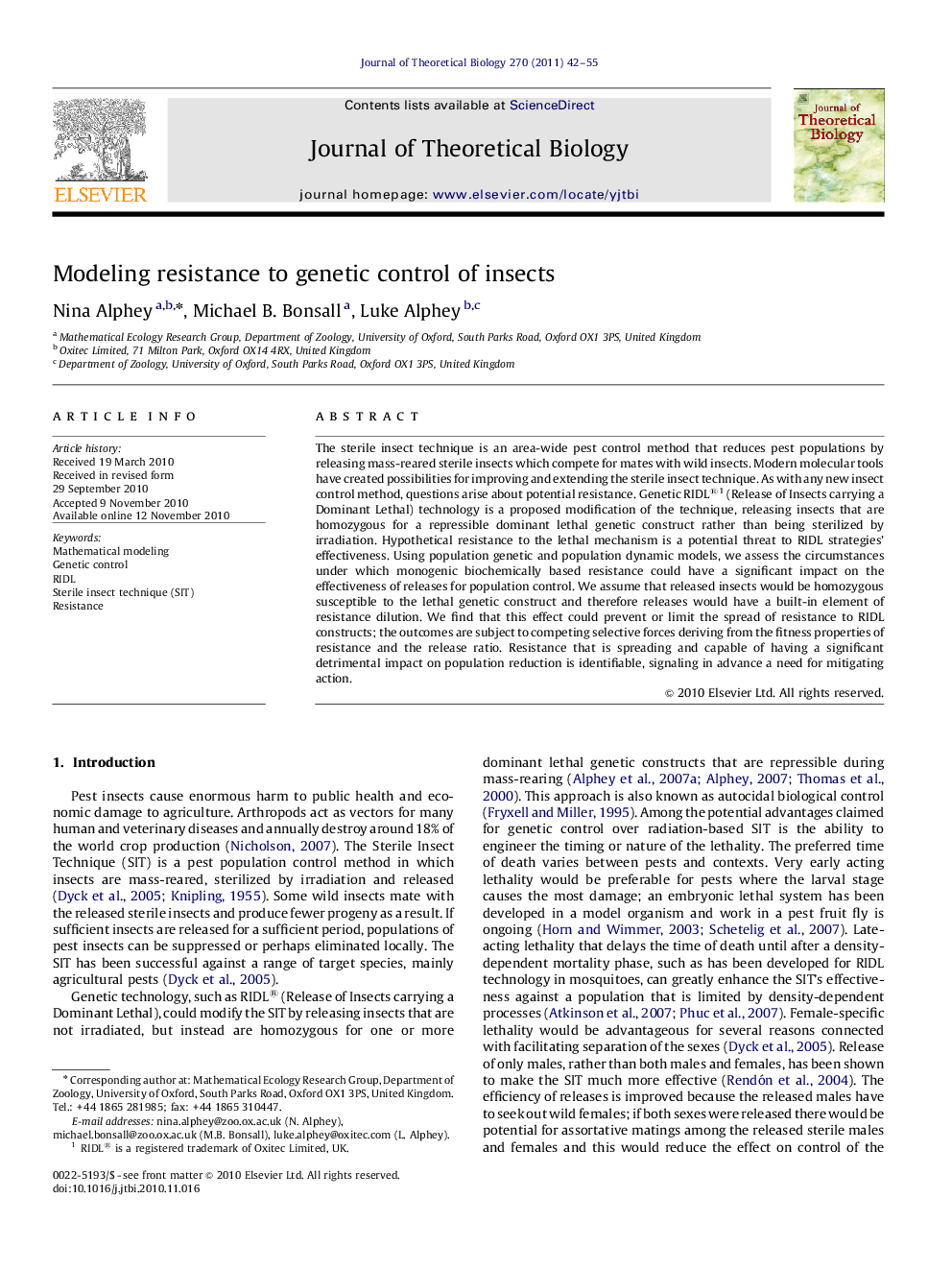| کد مقاله | کد نشریه | سال انتشار | مقاله انگلیسی | نسخه تمام متن |
|---|---|---|---|---|
| 6371462 | 1623926 | 2011 | 14 صفحه PDF | دانلود رایگان |
عنوان انگلیسی مقاله ISI
Modeling resistance to genetic control of insects
دانلود مقاله + سفارش ترجمه
دانلود مقاله ISI انگلیسی
رایگان برای ایرانیان
کلمات کلیدی
موضوعات مرتبط
علوم زیستی و بیوفناوری
علوم کشاورزی و بیولوژیک
علوم کشاورزی و بیولوژیک (عمومی)
پیش نمایش صفحه اول مقاله

چکیده انگلیسی
The sterile insect technique is an area-wide pest control method that reduces pest populations by releasing mass-reared sterile insects which compete for mates with wild insects. Modern molecular tools have created possibilities for improving and extending the sterile insect technique. As with any new insect control method, questions arise about potential resistance. Genetic RIDL®1 (Release of Insects carrying a Dominant Lethal) technology is a proposed modification of the technique, releasing insects that are homozygous for a repressible dominant lethal genetic construct rather than being sterilized by irradiation. Hypothetical resistance to the lethal mechanism is a potential threat to RIDL strategies' effectiveness. Using population genetic and population dynamic models, we assess the circumstances under which monogenic biochemically based resistance could have a significant impact on the effectiveness of releases for population control. We assume that released insects would be homozygous susceptible to the lethal genetic construct and therefore releases would have a built-in element of resistance dilution. We find that this effect could prevent or limit the spread of resistance to RIDL constructs; the outcomes are subject to competing selective forces deriving from the fitness properties of resistance and the release ratio. Resistance that is spreading and capable of having a significant detrimental impact on population reduction is identifiable, signaling in advance a need for mitigating action.
ناشر
Database: Elsevier - ScienceDirect (ساینس دایرکت)
Journal: Journal of Theoretical Biology - Volume 270, Issue 1, 7 February 2011, Pages 42-55
Journal: Journal of Theoretical Biology - Volume 270, Issue 1, 7 February 2011, Pages 42-55
نویسندگان
Nina Alphey, Michael B. Bonsall, Luke Alphey,